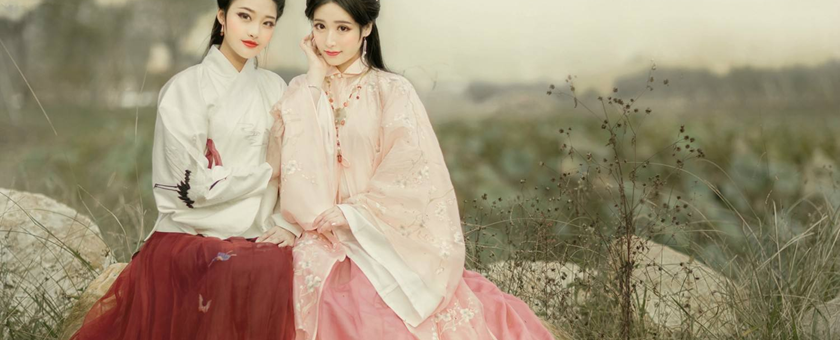info@chinaadventure.org
86-18008011324
Search
Chinese Hanfu, also known as "the Han nationality traditional clothing", acceded to the throne from the Huang Emperor to the middle of the 17th Century (Ming Dynasty) in the Han nationality residential areas—Through years of developing, Hanfu had absorbed Chinese culture silk embroideries skills and other outstanding technology and aesthetics, which inherited more than 30 Chinese intangible cultural heritage and Chinese arts and crafts.

The Origin of Hanfu
It is said that the history of Hanfu can be traced back to more than 4,000 years ago, when the imperial concubine Leizu of the legendary Huang Emperor (2698-2598 BC) made clothes out of silk. However, there is no archaeological evidence to support this.

Characteristics
Hanfu is essentially wrapped around the body with the left side over the right, in a style known as rightward cross collared, which just looks like the letter 'y' when seen from the front. Only when dressing the dead for burial would it be reversed. But there are also other kinds of shape of collars. For Hanfu, the patterns adopted from the Chinese symbols of etiquette are also important. They reflect the different social status of the bearer. Usually, embroidered objects depict the sun, the moon, elephants, tigers, dragons and birds.

The Basic Structure
Hanfu with width 2 feet 2 inches (about 50 cm) textiles clipping, and divided into the collar, front, the accused, short, shoemaker, sleeve, belt, Fu ten parts. Take two pieces of cloth of equal length and fold them in half respectively, as the front and rear train, and close the middle seam of the back. The front without the front is a straight collar dress. And if take another piece of cloth, and cut it into two skirts, and sew it on the right and left skirts, it shall be the right skirt with a diagonal neck. After the front fringing raphe called Qiu, Du meridian and lapel meridian, the accused in pulse right vein, therefore calls right lapel. The length of the train is divided into the waist, the knee and the foot. According to the length of the fringing, there are three kinds of Hanfu length: Ru, Shu, deep. The seam of sleeve and skirt is called turning and the cuff is called removing. A complete set of Hanfu usually has three layers: Xiaoyi (underwear), Zhongyi, and Overcoat.

Modern Hanfu
After more than 400 years of lag, many Chinese are demanding a revival of Hanfu as a trend that the public should be proud of their Chinese culture.
Many supporters believe that wearing Hanfu gives them a strong sense of national identity.
Many universities in China have Hanfu associations, whose members wear Hanfu to celebrate traditional Chinese festivals. They take this opportunity to introduce Hanfu to others.

The Influence of Hanfu in East Asia
Hanfu is a symbol of traditional Chinese culture. Its clothing for other Asian neighbors also had a profound impact, such as the Japanese kimono, Korean hanbok. Chinese clothing was adopted by the Japanese in the 5th Century. Kimono is a traditional Japanese costume. Another term is Gofuku, which means "Wu's clothes". Wu was one of The Three Kingdoms of China (220-280).

Recommended Hanfu Itinerary
Chinese Hanfu Cultural Day Tour
we’ll reply you in 24 hours!
Copyright © 2012-2024 All Rights Reserved to chinaadventure.org